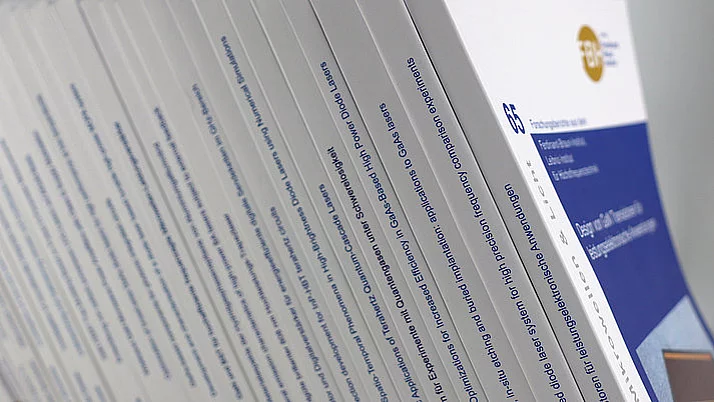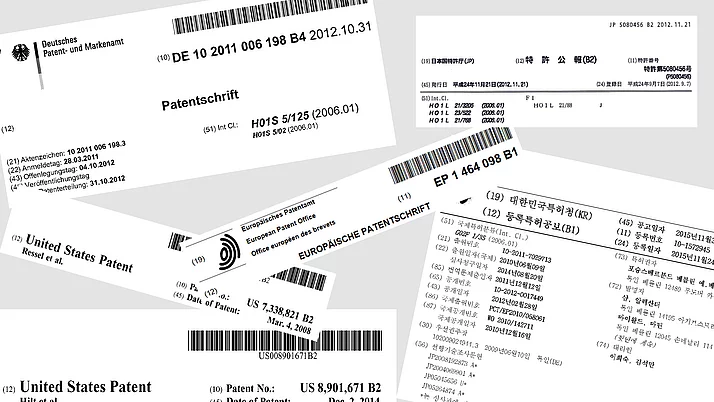Origin of defect luminescence in ultraviolet emitting AlGaN diode structures
M. Feneberg1, F. Romero1,a, R. Goldhahn1, T. Wernicke2, C. Reich2, J. Stellmach2, F. Mehnke2, A. Knauer3, M. Weyers3, and M. Kneissl2,3
Published in:
Appl. Phys. Lett., vol. 118, no. 20, pp. 202101, doi:10.1063/5.0047021 (2021).
Abstract:
Light emitting diode structures emitting in the ultraviolet spectral range are investigated. The samples exhibit defect luminescence bands. Synchrotron-based photoluminescence excitation spectroscopy of the complicated multi-layer stacks is employed to assign the origin of the observed defect luminescence to certain layers. In the case of quantum well structures emitting at 320 and 290 nm, the n-type contact AlGaN:Si layer is found to be the origin of defect luminescence bands between 2.65 and 2.8 eV. For 230 nm emitters without such n-type contact layer, the origin of a defect double structure at 2.8 and 3.6 eV can be assigned to the quantum wells.
1 Institut für Physik, Otto-von-Guericke-Universität Magdeburg, Universitätsplatz 2, 39106 Magdeburg, Germany
2 Institut für Festkörperphysik, Technische Universität Berlin, Hardenbergstr. 30, 10623 Berlin, Germany
3 Ferdinand-Braun-Institut gGmbH, Leibniz-Institut für Höchstfrequenztechnik, Gustav-Kirchhoff-Str. 4, 12489 Berlin, Germany
b Present address: Universidad Francisco de Vitoria, Carretera Pozuelo a Majadahonda, Km 1.800, 28223 Madrid, Spain
Topics:
Photoluminescence excitation spectroscopy, Heterostructures, Light emitting diodes, Quantum wells, Synchrotron radiation, Semiconductors, Photoluminescence spectroscopy
Copyright © 2021 Author(s). Published under an exclusive license by AIP Publishing.
Original content from this work may be used under the terms of the Creative Commons Attribution 4.0 licence. Any further distribution of this work must maintain attribution to the author(s) and the title of the work, journal citation and DOI.
Full version in pdf-format.


